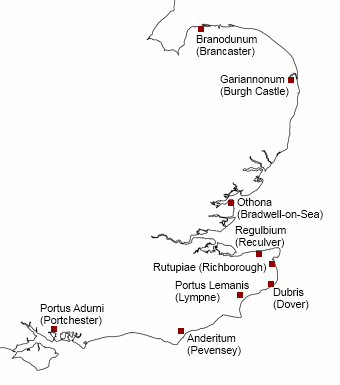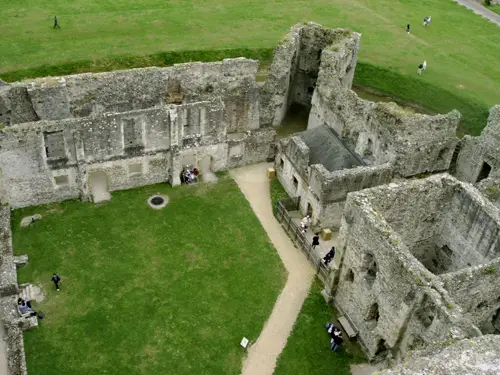The Saxon Shore Forts
The Saxon Shore forts were a group of military installations built along England's southeastern coast in the late 3rd Century, probably to protect against invasions by Germanic peoples.
The name comes from a late 4th Century document titled Notitia Dignitatum, which includes a list of "Castrorum Litus Saxonicum", which can be translated into English as Saxon Shore forts. The nine were, from north to south, these:
Also mentioned in that late 4th Century document was the Count of the Saxon Shore ("Comes Litoris Saxonici per Britanniam"), a leader who coordinated the defenses of all of the Saxon Shore forts. Roman troops left Britain for good in 410. Not long after that, the Anglo-Saxons overwhelmed the area formerly protected by the Saxon Shore forts, and the new settlers didn't do well with the upkeep in all locations. The internal buildings, made of wood, didn't survive. The stone walls, however, lasted longer, especially if later inhabitants found a use for them.
One particular exception is Dover Castle, onto which the current town was built. Existing also at the time that the Saxon Shore forts were at their height were three forts across the English Channel. Those forts, in Gaul, were more localized, so no Count of the French Saxon Shore existed. Some sources list a 10th fort, at Walton Castle, near Felixstowe; centuries of change in sea levels have eliminated any evidence to prove such a theory. |
|
Social Studies for Kids
copyright 2002–2024
David White



 Britain was ruled by Rome in those days, and so Roman soldiers built and maintained nine forts, all strategically located near harbors or river estuaries. The forts varied in overall shape but were similar in defensive capabilities: tall, thick walls, surrounded by ditches and ramparts. Soldiers manning the forts would have had room for operating ballistas and catapults from the forts' bastions and towers.
Britain was ruled by Rome in those days, and so Roman soldiers built and maintained nine forts, all strategically located near harbors or river estuaries. The forts varied in overall shape but were similar in defensive capabilities: tall, thick walls, surrounded by ditches and ramparts. Soldiers manning the forts would have had room for operating ballistas and catapults from the forts' bastions and towers.  Parts of some of these forts still exist, the result of continued attention by later Saxons and Normans and medieval English. For example, tourists can still see extensive remains at Portchester (left) and Richborough.
Parts of some of these forts still exist, the result of continued attention by later Saxons and Normans and medieval English. For example, tourists can still see extensive remains at Portchester (left) and Richborough.
